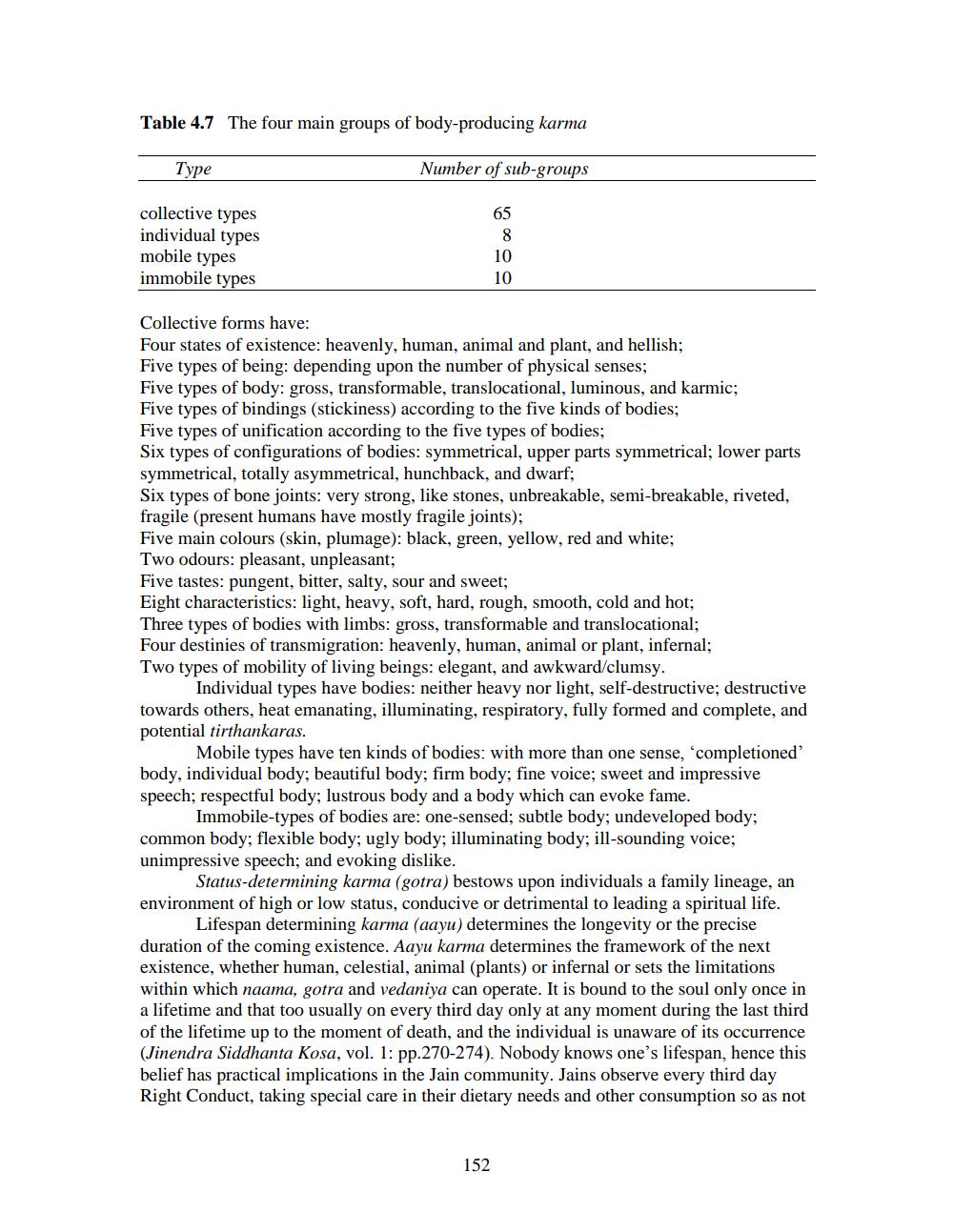________________
Table 4.7 The four main groups of body-producing karma
Type
Number of sub-groups
collective types individual types mobile types immobile types
Collective forms have: Four states of existence: heavenly, human, animal and plant, and hellish; Five types of being: depending upon the number of physical senses; Five types of body: gross, transformable, translocational, luminous, and karmic; Five types of bindings (stickiness) according to the five kinds of bodies; Five types of unification according to the five types of bodies; Six types of configurations of bodies: symmetrical, upper parts symmetrical; lower parts symmetrical, totally asymmetrical, hunchback, and dwarf; Six types of bone joints: very strong, like stones, unbreakable, semi-breakable, riveted, fragile (present humans have mostly fragile joints); Five main colours (skin, plumage): black, green, yellow, red and white; Two odours: pleasant, unpleasant; Five tastes: pungent, bitter, salty, sour and sweet; Eight characteristics: light, heavy, soft, hard, rough, smooth, cold and hot; Three types of bodies with limbs: gross, transformable and translocational; Four destinies of transmigration: heavenly, human, animal or plant, infernal; Two types of mobility of living beings: elegant, and awkward/clumsy.
Individual types have bodies: neither heavy nor light, self-destructive; destructive towards others, heat emanating, illuminating, respiratory, fully formed and complete, and potential tirthankaras.
Mobile types have ten kinds of bodies: with more than one sense, completioned' body, individual body; beautiful body; firm body; fine voice; sweet and impressive speech; respectful body; lustrous body and a body which can evoke fame.
Immobile-types of bodies are: one-sensed; subtle body; undeveloped body; common body; flexible body; ugly body; illuminating body; ill-sounding voice; unimpressive speech; and evoking dislike.
Status-determining karma (gotra) bestows upon individuals a family lineage, an environment of high or low status, conducive or detrimental to leading a spiritual life.
Lifespan determining karma (aayu) determines the longevity or the precise duration of the coming existence. Aayu karma determines the framework of the next existence, whether human, celestial, animal (plants) or infernal or sets the limitations within which naama, gotra and vedaniya can operate. It is bound to the soul only once in a lifetime and that too usually on every third day only at any moment during the last third of the lifetime up to the moment of death, and the individual is unaware of its occurrence (Jinendra Siddhanta Kosa, vol. 1: pp.270-274). Nobody knows one's lifespan, hence this belief has practical implications in the Jain community. Jains observe every third day Right Conduct, taking special care in their dietary needs and other consumption so as not
152




